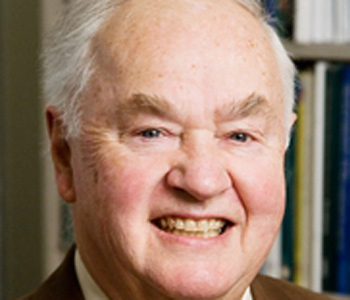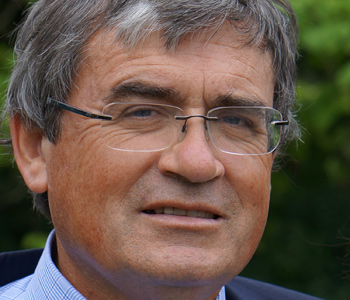Kendall Hoyt
Long Shot: Vaccines for National Defense
Harvard University Press
320 pages, 6 1/8 x 9 1/4 inches
ISBN 978 0674061583
The ability to develop new vaccines quickly is essential to national security and public health. Historically, the U.S. has excelled at responding to national health emergencies. World War II-era programs developed ten new or improved vaccines, often in time to meet the specific objectives of a military mission. However, since that time rates of vaccine innovation have been falling, not rising.
The idea that we will have the drugs/vaccines that we need, when we need them, is less true today than it once was. The molecular biology revolution has yielded a myriad of tools that facilitate new development. But key research capabilities have eroded, rendering innovation less likely and supplies more vulnerable. As man-made biological threats proliferate and new diseases continue to emerge naturally, we have an urgent need to understand the conditions that foster timely innovation.
Many celebrated late twentieth-century developments—the explosion of scientific sub disciplines and bioengineering techniques, the specialization and dispersion of firm capabilities, and the growth of outsourcing—have actually frustrated vaccine development efforts. The present environment gives developers access to a wider range of scientific expertise and sophisticated techniques, lower overhead, risk-sharing arrangements, and near-term market efficiencies. But it also leads to higher overall development times and failure rates largely because the development process has become so disaggregated.
Few understand the seriousness of this problem because widespread errors in official vaccine license records create the false impression that innovation has steadily increased over time. These data create support for innovation policies that have not worked well for vaccines of global health and national security importance. Present day vaccine programs tinker with push/pull policies (such as research grants or market guarantees) to spur innovation, but they rarely scrutinize the development process itself to address critical obstacles to innovation.
Long Shot probes the history of vaccine development for lessons that can inform our efforts to rebuild twenty-first century biodefense capabilities, especially when the financial payback for a particular vaccine is low, but the social returns are high.
My interest in this topic began in 1999 when I was sitting in the back of a bus in Japan, reading an article about Aum Shinrikyo, a cult that released Sarin gas in a Tokyo subway in 1995. What I didn’t realize was that the cult had attempted numerous attacks with biological agents as well. While these biological attacks had been unsuccessful, I was horrified by how easily things could have gone another way. Biological weapons provide an asymmetric advantage to disgruntled groups and individuals. It was clear to me that biological weapons-relevant materials and expertise would proliferate and that this threat would grow over time.
Meanwhile, I was aware that naturally occurring disease threats were increasing as well. After decades of watching disease rates fall, experts recorded that the death rate from infectious disease had been on the rise in the U.S. since 1980, even if one excludes HIV/AIDS cases.
I was concerned that vaccine development was not keeping pace with these rapidly evolving threats from man and nature, so I tried to document vaccine innovation rates over time by plotting the number of new vaccine licenses per decade.
What began as a simple exercise was immediately complicated by the fact that vaccine license records were incomplete and inaccurate. Many original licenses had been lost or re-entered at a later date and many licenses had been issued for non-innovative activity (i.e. name changes and license transfers) since the 1970s. As a consequence, publicly available data under-represented mid-century innovation rates and inflated late century innovation.
I restored original licenses that had been lost from federal records, corrected inaccuracies, and identified which licenses represented innovative activity. These new data demonstrated that innovation had been falling, not rising since World War II. This finding was at odds with market-driven theories of innovation.
Traditional market-based formulas for innovation in industrial settings predict that greater economic incentives, technological opportunities, and firm capabilities in the latter half of the century should have led to a corresponding rise in innovation rates. Yet the data demonstrate a decline.
To get a better understanding of the forces that drove vaccine innovation, I began to investigate the developmental history of individual vaccines. I noticed that historically successful vaccine development programs often used a consistent set of integrated research practices.
“Integrated” is a catch-all term for research that is directed from the top down, coordinated across disciplines and developmental phases, and situated in a community that facilitates information transfer. Thomas Francis Jr. used these techniques when he developed the first licensed Influenza vaccines in the 1940s, as did Jonas Salk when he developed the first licensed the first Polio vaccines in the 1950s, and Maurice Hilleman when he developed the Adenovirus, Measles, Mumps, Rubella, Meningococcal Meningitis and Hepatitis B vaccines.
I think the casual reader might be surprised to discover that the military made significant contributions to over half of the vaccines developed in the twentieth century.
Just as military interest in weapons manufacturing, information systems, and machine control inspired innovation, so too has military interest in the problems of disease control.
Fighting disease has always been equally, if not more important for the military than fighting the enemy. Prior to World War II, soldiers died more often of disease than battle injuries. War magnifies the spread and severity of disease by causing large-scale social dislocations and by consolidating large populations of physically stressed individuals. Preventive measures are preferable to therapeutic measures for operational reasons because they reduce sick days.
Not only did military scientists develop a set of skills that were particularly well-suited for vaccine development, they had a number of built in advantages: excellent record keeping, a relatively homogenous demographic, and an international network of labs that brought them into close proximity with the populations directly affected by the disease under study. These circumstances facilitated efforts to identify new diseases and to evaluate new vaccine candidates.
The Walter Reed Army Institute for Research (WRAIR) became a center of excellence for infectious disease research and vaccine development during the Cold War and instilled an entire generation of vaccine scientists with a unique set of interdisciplinary research skills. WRAIR alumni filled top positions in academia, industry, and government and they often worked together to facilitate the development of many mid-century vaccines.
By the end of the cold war, funding for vaccine research began to shift from WRAIR to the National Institutes of Health (NIH). While the NIH excels at early stage discovery, it is not as well suited to the highly collaborative development work required to generate viable vaccine candidates for industry. The NIH began to produce a new generation of scientists with highly specialized skills and impressive publication records, but these scientists were less well adapted to the translational challenges of vaccine development.
As we try to keep pace with the growing number of pathogenic threats to health and security, it is important to recognize that the most dangerous threats will be unforeseen and unannounced (such as SARS in 2003). With the exception of smallpox and anthrax vaccines, which can be used for post exposure prophylaxis, it makes more sense to invest in new tools and methods that will allow us to catch up to new threats, even if we can’t predict them. Large vaccine stockpiles are expensive and hubristic.
Biodefense programs should emphasize research tools and technologies that will shorten development times and/or introduce flexibility into the medical countermeasure (MCM) development process. Flu manufacturers already develop vaccines for new strains on a six-month timeline every year. These response times were possible even before developers began to exploit currently available technologies (i.e., reverse genetics and cell culture techniques), much less invest in new ones.
Critical areas for future investment include rapid detection and diagnostics to speed identification of novel pathogens and diseases, better disease models and biomarkers, rapid expression systems for injectable proteins, DNA vaccine scaffolds, and adjuvants to induce immunity more quickly and/or to improve the immunogenicity of DNA vaccines. Thermostable formulations, and “no needle” delivery systems will also facilitate efforts to distribute and administer MCMs in an emergency.
Moving forward, we will also have to find ways to reintroduce integrated research practices. Rather than attempting wholesale reform the vaccine development process today, an emergency MCM program offers an opportunity to incubate new integrated approaches.
This is easier said than done because we need to create a financial and organizational vehicle that can sustain a long-term investment in building a system to streamline everything that needs to happen from the moment we detect a new pathogen from the moment we administer a new medical countermeasure for that pathogen.
It is increasingly possible to support integrated R&D through a growing array of public private product development partnerships (PDPs). For example, Aeras, a PDP for Tuberculosis vaccine development, incorporates many integrated research practices.
This PDP uses top down direction to distill and apply relevant research findings from a wide array of sources and traveling development and clinical teams facilitate the type of on-site cross-disciplinary collaboration that enables tacit information transfer. Aeras also maintains many of their own labs and manufacturing facilities, which (unlike virtual models that outsource these functions) builds communities of researchers that can retain an institutional memory of lessons learned.
Shifting the strategic focus of biodefense programs and re-introducing integrated research practices will address problems that have beset vaccine developers for the past several decades and restore our capacity to respond to a rapidly evolving array of threats to global health and security.



.jpg)
We don't put paywalls. We don't distract you with ads. We don't sell your data.
Please help to keep this running!